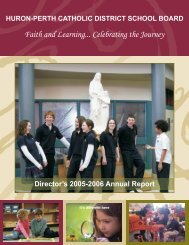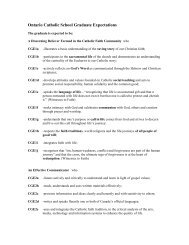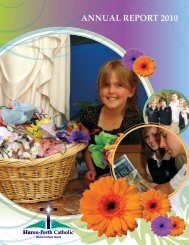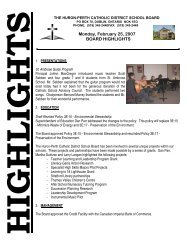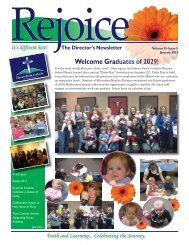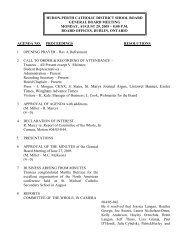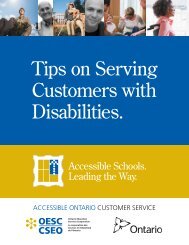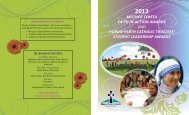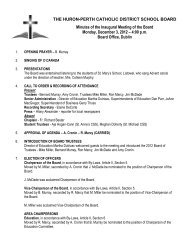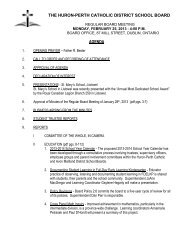The Individual Education Plan (IEP) - A Resource Guide, 2004
The Individual Education Plan (IEP) - A Resource Guide, 2004
The Individual Education Plan (IEP) - A Resource Guide, 2004
You also want an ePaper? Increase the reach of your titles
YUMPU automatically turns print PDFs into web optimized ePapers that Google loves.
<strong>The</strong> above list of expectations represents all of the learning expectations for<br />
the course for one reporting period. As the list does not encompass the overall<br />
expectations and represents only a small subsection of the regular expectations<br />
for the courses, it is not expected that the principal would grant a<br />
credit for this course.<br />
<strong>Plan</strong> and Document Alternative Programs or Courses<br />
For each alternative program and alternative course, the following information<br />
is required:<br />
• current level of achievement<br />
• annual program goal<br />
• learning expectations<br />
It is also recommended that, for each learning expectation, the <strong>IEP</strong> indicate:<br />
• the corresponding teaching strategy, if individualized for the student and<br />
particular to that expectation (see p. 38);<br />
• the corresponding assessment method.<br />
A student’s current level of achievement in an alternative program or course<br />
should be indicated in a description taken from the latest alternative report<br />
card. (A grade level or mark is not necessary or advisable.) For example:<br />
• “In social skills, [the student] is able to employ ‘Stop, Think, Do’, or a<br />
similar technique, at a rate of 2 out of 10 possible situations.”<br />
• “In personal care, [the student] is able to locate his lunch in the classroom<br />
cupboard.”<br />
<strong>The</strong> annual program goal is a statement that describes what a student can<br />
reasonably be expected to accomplish by the end of the school year in a<br />
particular alternative program or course. Annual program goals need to be<br />
expressed as observable, measurable outcomes. For example:<br />
• “In social skills, [the student] will employ ‘Stop, Think, Do’, or a similar<br />
technique at a rate of 7 out of 10 possible situations.”<br />
• “In personal care, [the student] will be able to retrieve and arrange food,<br />
eat lunch, and clean up the lunch area.”<br />
<strong>The</strong> learning expectations for an alternative program or course indicate, by<br />
reporting period, the knowledge and/or skills the student is expected to<br />
demonstrate and have assessed. <strong>The</strong>y should describe specific skills that the<br />
student can demonstrate independently, given the provision of appropriate<br />
assessment accommodations. For example:<br />
• “In social skills, [the student] will demonstrate, through role-playing, the<br />
‘Stop, Think, Do’ technique and employ it or a similar technique at a rate<br />
of 4 out of 10 possible situations.”<br />
Phase 3: Develop the <strong>IEP</strong> as It Relates to the Student’s Special <strong>Education</strong> Program and Services<br />
37



